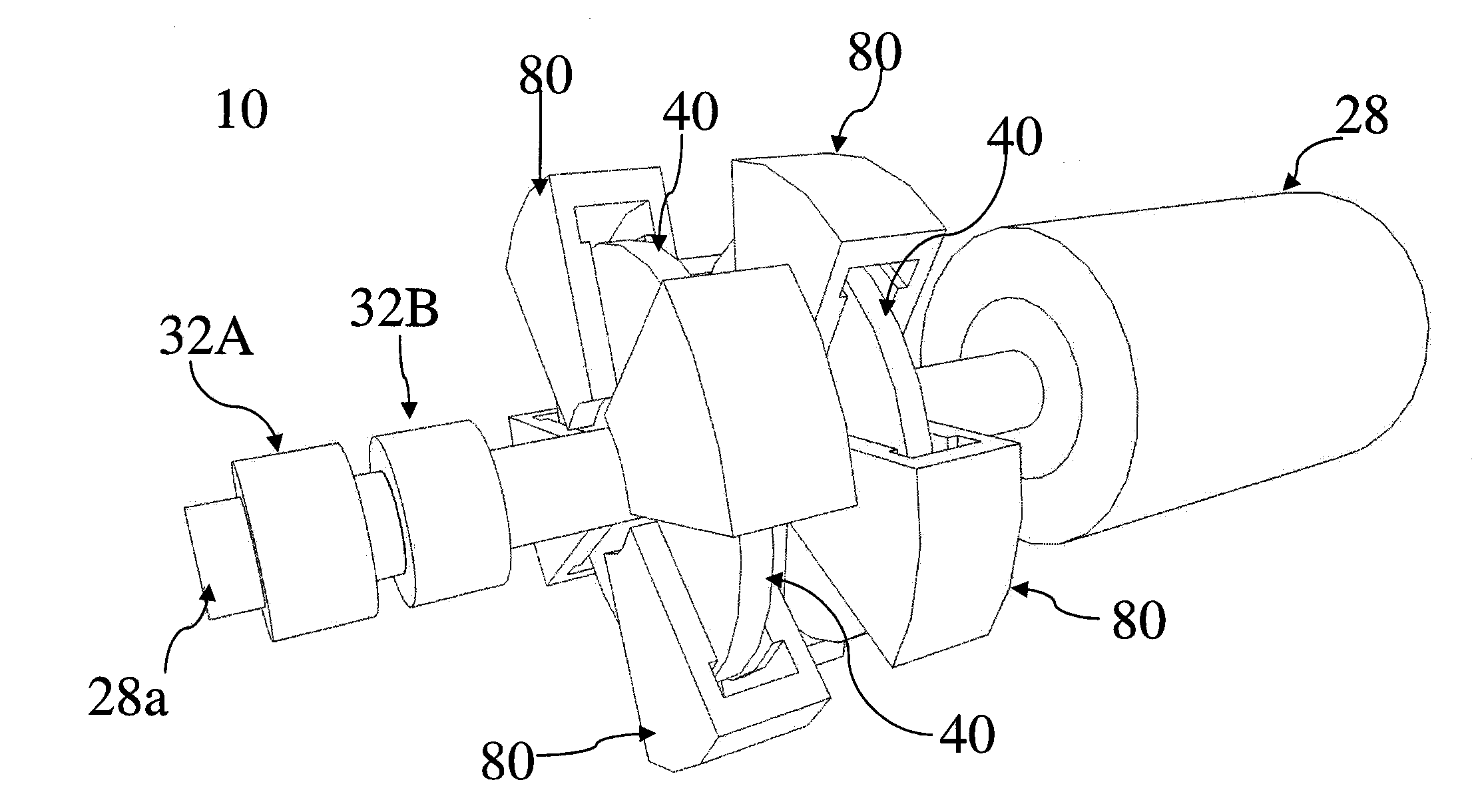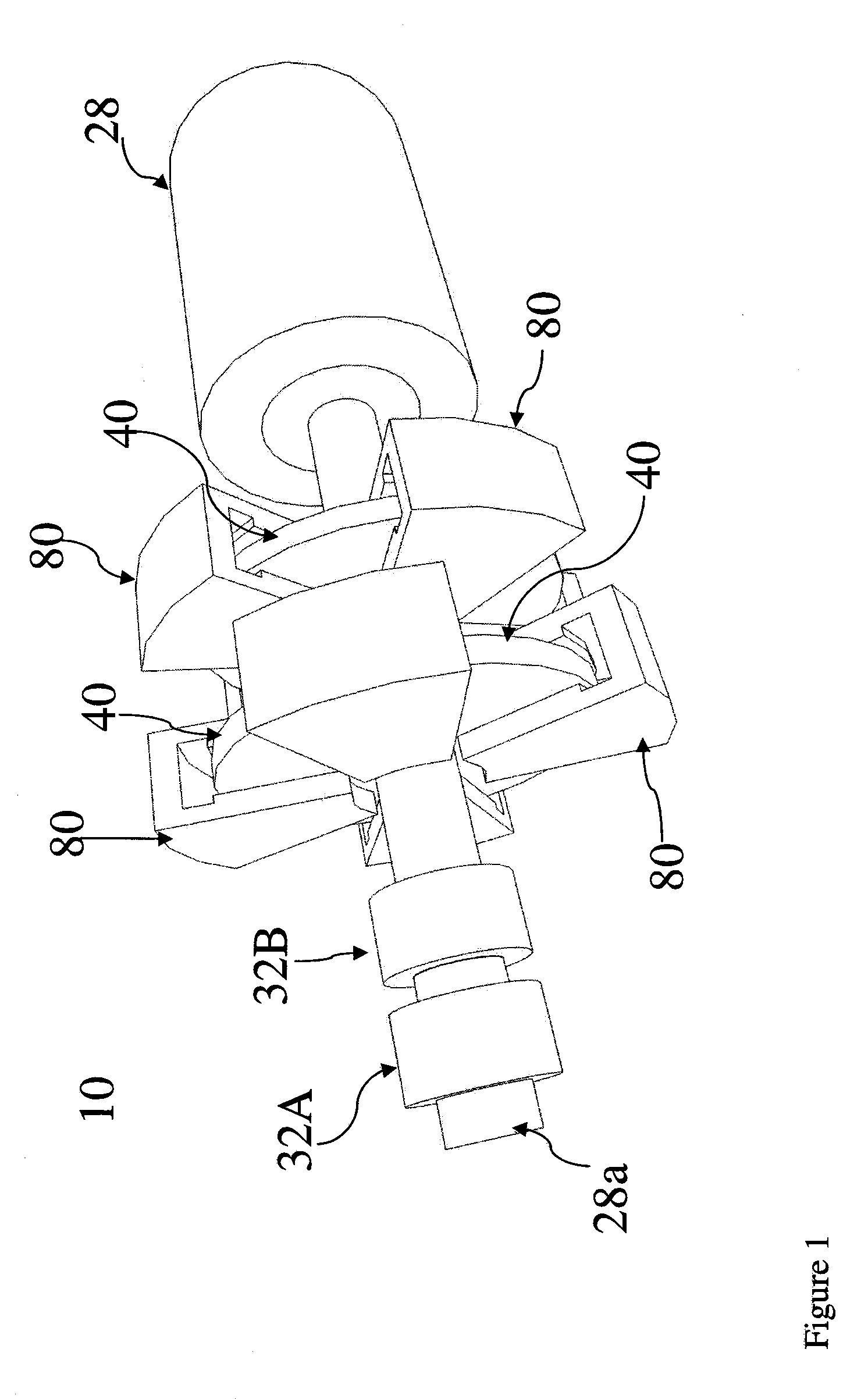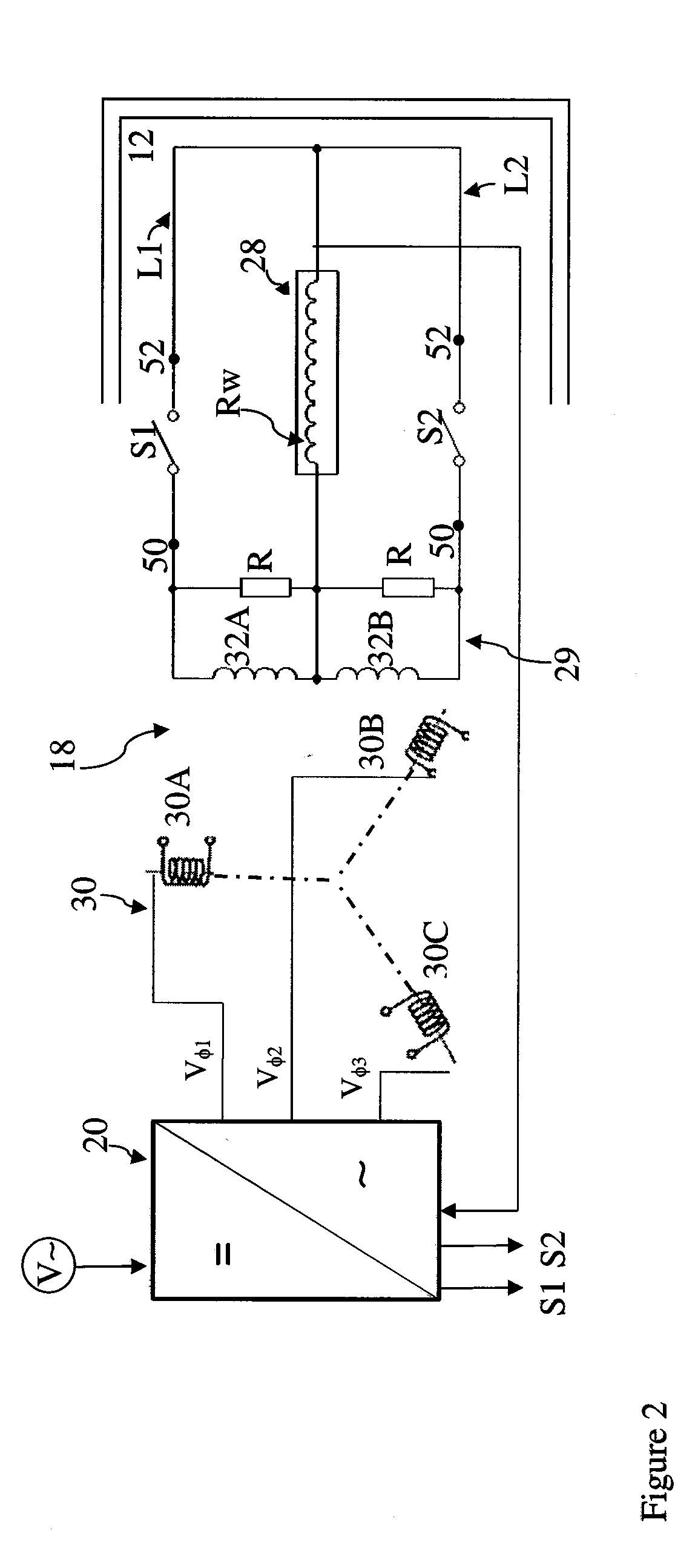High Temperature Superconducting Electromechanical System With Frequency Controlled Commutation For Rotor Excitation
a superconducting electromechanical system and rotor excitation technology, applied in the direction of superconductor details, motor/generator/converter stopper, dynamo-electric converter control, etc., can solve the problems of significant losses through the conductor extending across the interface, loss during power delivery from a 300 k environment, etc., to achieve low manufacturing cost, simple quench protection, and optimal heat load of the machine and efficiency
- Summary
- Abstract
- Description
- Claims
- Application Information
AI Technical Summary
Benefits of technology
Problems solved by technology
Method used
Image
Examples
Embodiment Construction
[0024]Before describing in detail the embodiments of a system and a method according to the invention, it is noted that the present invention resides primarily in a novel and non-obvious combination of components and process steps. So as not to obscure the disclosure with details that will be readily apparent to those skilled in the art, certain conventional components and steps have been omitted or presented with lesser detail, while the drawings and the specification provide greater emphasis on other elements and steps pertinent to understanding the invention. Further, the following embodiments do not define limits as to structure or method according to the invention, but provide examples which include features that are permissive rather than mandatory and illustrative rather than exhaustive.
[0025]FIG. 1 is a simplified partial perspective view of a motor system 10 according to an example embodiment of the invention. FIG. 2 is an equivalent circuit illustrating features of a flux ...
PUM
 Login to View More
Login to View More Abstract
Description
Claims
Application Information
 Login to View More
Login to View More - R&D
- Intellectual Property
- Life Sciences
- Materials
- Tech Scout
- Unparalleled Data Quality
- Higher Quality Content
- 60% Fewer Hallucinations
Browse by: Latest US Patents, China's latest patents, Technical Efficacy Thesaurus, Application Domain, Technology Topic, Popular Technical Reports.
© 2025 PatSnap. All rights reserved.Legal|Privacy policy|Modern Slavery Act Transparency Statement|Sitemap|About US| Contact US: help@patsnap.com



